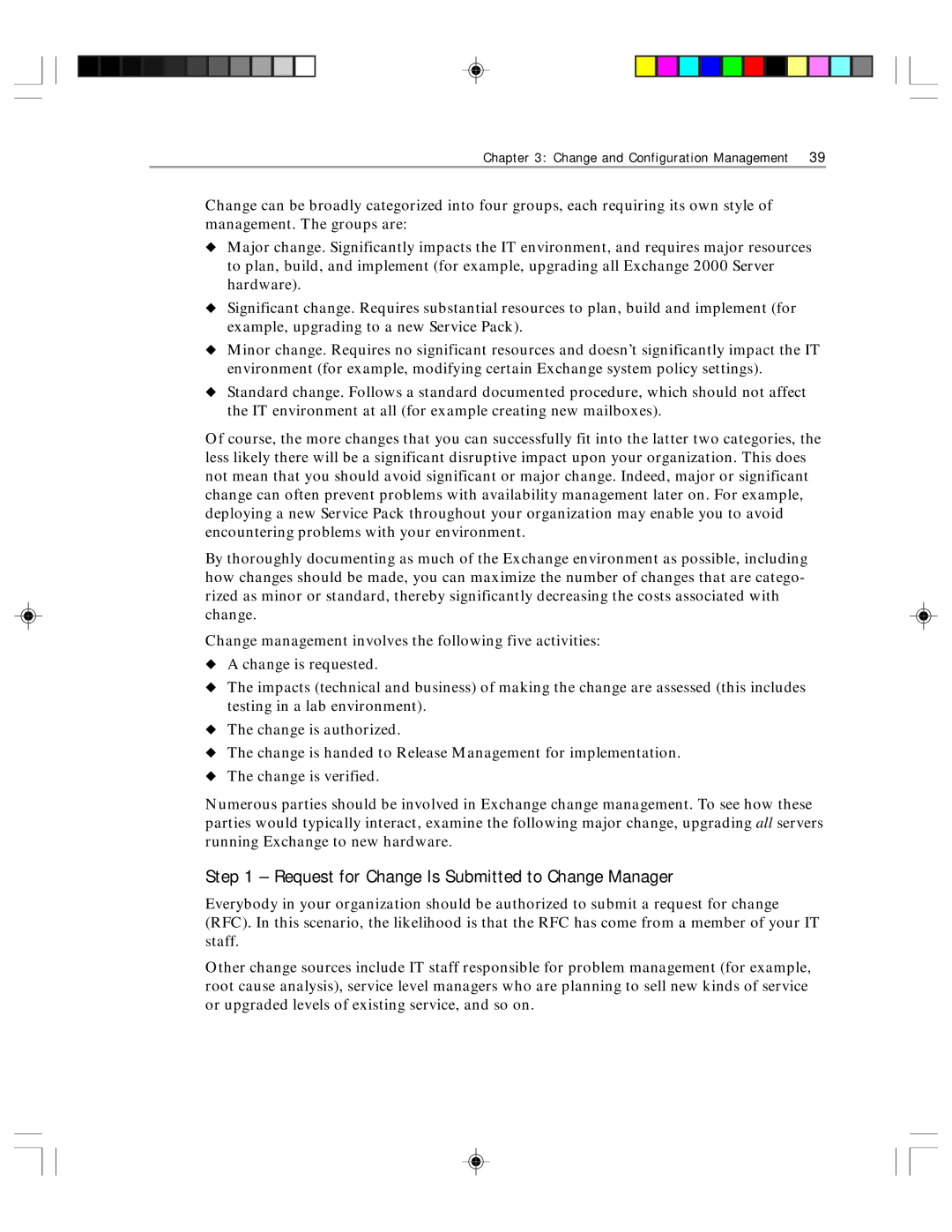
Chapter 3: Change and Configuration Management 39
Change can be broadly categorized into four groups, each requiring its own style of management. The groups are:
◆Major change. Significantly impacts the IT environment, and requires major resources to plan, build, and implement (for example, upgrading all Exchange 2000 Server hardware).
◆Significant change. Requires substantial resources to plan, build and implement (for example, upgrading to a new Service Pack).
◆Minor change. Requires no significant resources and doesn’t significantly impact the IT environment (for example, modifying certain Exchange system policy settings).
◆Standard change. Follows a standard documented procedure, which should not affect the IT environment at all (for example creating new mailboxes).
Of course, the more changes that you can successfully fit into the latter two categories, the less likely there will be a significant disruptive impact upon your organization. This does not mean that you should avoid significant or major change. Indeed, major or significant change can often prevent problems with availability management later on. For example, deploying a new Service Pack throughout your organization may enable you to avoid encountering problems with your environment.
By thoroughly documenting as much of the Exchange environment as possible, including how changes should be made, you can maximize the number of changes that are catego- rized as minor or standard, thereby significantly decreasing the costs associated with change.
Change management involves the following five activities:
◆A change is requested.
◆The impacts (technical and business) of making the change are assessed (this includes testing in a lab environment).
◆The change is authorized.
◆The change is handed to Release Management for implementation.
◆The change is verified.
Numerous parties should be involved in Exchange change management. To see how these parties would typically interact, examine the following major change, upgrading all servers running Exchange to new hardware.
Step 1 – Request for Change Is Submitted to Change Manager
Everybody in your organization should be authorized to submit a request for change (RFC). In this scenario, the likelihood is that the RFC has come from a member of your IT staff.
Other change sources include IT staff responsible for problem management (for example, root cause analysis), service level managers who are planning to sell new kinds of service or upgraded levels of existing service, and so on.
